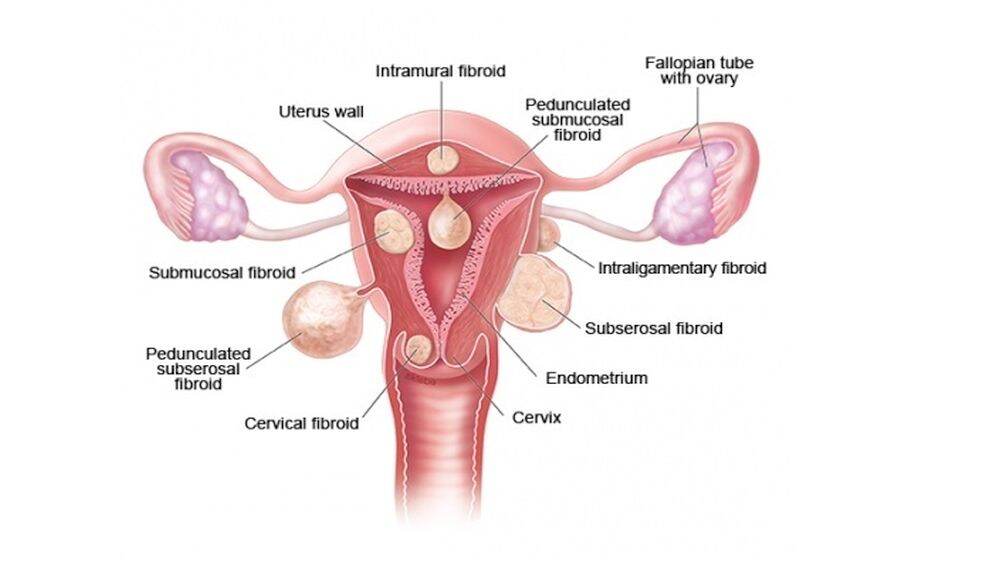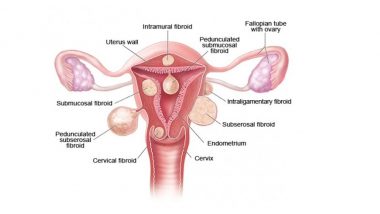In a recent case, a giant uterine fibroid was removed from a woman's abdomen. The successful surgery took place in Singapore and the fibroid weighing about 28 kilograms was removed from the 53-year-old woman, according to reports. A fibroid only gets called giant when it weighs above 11 kg and in this case, it was way beyond 11 kg.
The reports suggest that the fibroid was removed with the help of a total abdominal hysterectomy(also used to remove the uterus). The fibroid caused the woman to be unable to move and stay bedridden mostly. She also reportedly experienced shortness of breath as well.
What Is a Uterine Fibroid?
Fibroids are usually non-cancerous abnormal growth in the uterus. They have become very common these days and their size and location varied from women to women. According to a study, 'Many women have benign (non-cancerous) growths known as fibroids in or on their womb (uterus). Most fibroids are small and don't cause any problems. They are usually discovered by chance. Depending on where fibroids are located, they may cause period pain, heavy menstrual bleeding or other symptoms.' The study further says, 'Fibroids are made up of muscle cells and connective tissue. Their size, shape and location vary.'
Types of Fibroids
Fibroids could be of different sizes and shapes also, placed in the different area. Fibroids are mainly categorized based on where they are. Here are the possible areas prone to fibroids.
Submucosal fibroids: Directly under the lining of the womb
Intramural fibroids: In the wall of the womb
Subserosal fibroids: On the outer wall of the womb
Cervical fibroids: In the cervix
Intraligamentary fibroids: In the connective tissue next to the womb

Symptoms of Fibroids
Symptoms of Fibroids differ from woman to woman some may have a number of symptoms some may not have any and since the fibroids may be present in different locations they symptoms may differ location-wise as well. A study says, 'Fibroids usually cause symptoms if they affect the function of the womb, for example during menstrual bleeding. Fibroids that grow just under the lining of the womb are particularly likely to cause heavy menstrual bleeding. Regular heavy periods can lead to anaemia. Women who have anaemia often look pale and feel tired.'
However, some of the common symptoms of Fibroids in women between the ages of 30 and 50 are.
- Severe or prolonged menstrual bleeding
- Severe, cramp-like period pain
- Diffuse pain and tension in the abdomen
Experts believe that fibroids aren't usually dangerous and apart from menstrual issues and a few discomfort(usually in giant fibroids) women don't face any other problems. Study reveals,' Experts estimate that about 40 to 80% of all women have fibroids. Many of the fibroids are very small, and most women never notice that they have them. Fibroids only sometimes cause symptoms, but it's difficult to say exactly how often, and how likely they are to do so. It's also hard to predict how a fibroid will continue to develop: Fibroids grow to different sizes and at different speeds. Some fibroids and their associated symptoms hardly change despite not having treatment. Other fibroids grow bigger, and the symptoms get worse over time. Symptoms may also gradually go away on their own. Fibroids usually become smaller after a woman has reached menopause, and then the symptoms nearly always disappear as well. Having hormone therapy for menopause symptoms may prevent fibroids from shrinking in some cases. Then the fibroid symptoms don't go away either.'
(The above story first appeared on LatestLY on Sep 09, 2018 10:32 AM IST. For more news and updates on politics, world, sports, entertainment and lifestyle, log on to our website latestly.com).













 Quickly
Quickly




















